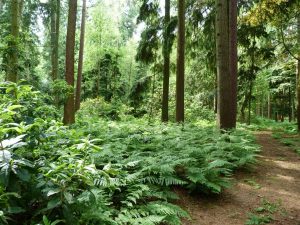
Continuous cover forestry at The New Wood, Weasenham
They will not all make it. Some will succumb to fungus or gales or be taken out to make room for the surrounding trees. The gaps thus created provide room for natural regeneration to occur and where it does not, individual trees can be planted. As time progresses the forest becomes more uneven aged, providing the perfect habitat for many species of small birds including Goldcrests, Coaltits, Long-Tailed Tits and many of the Warblers.
The New Woods have never been clear felled and present a balance of naturally sown and strategically planted trees. The system practiced here is known as Continuous Cover Forestry and is the oldest example of this system of forestry in Britain.
When woodland is managed in this way you are imitating what happens in the natural forests of the world, be they in a tropical or temperate climate. Basically nature is on your side and you are not fighting it, as with an even aged monoculture plantation system, so widely seen in this country.